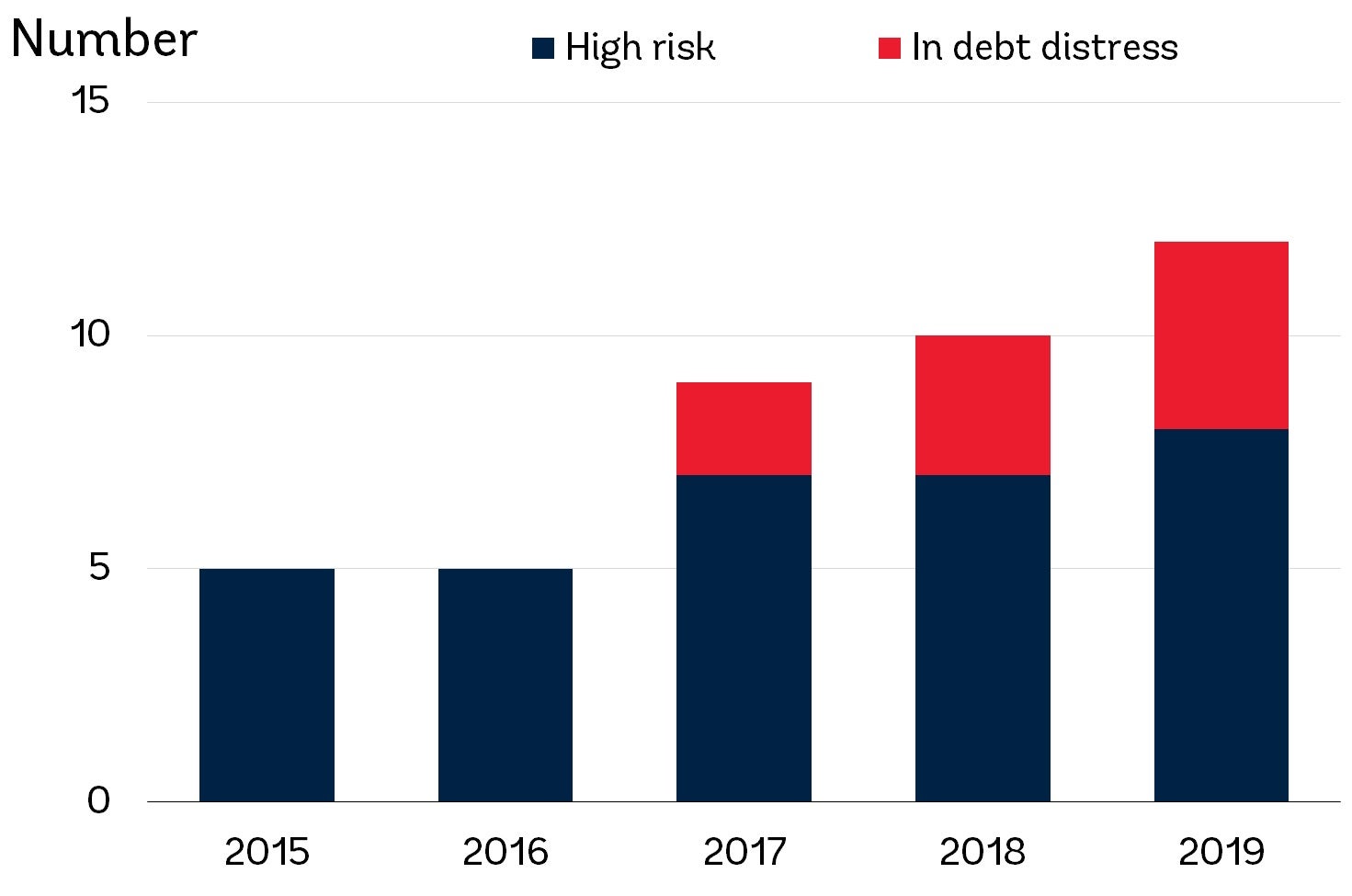The recovery in low-income countries (LICs) stalled in 2019, with growth falling to a weaker-than-expected 5.4 percent as global and country-specific factors dampened activity. Globally, external demand was softer and commodity prices were weaker. Locally, political instability and devastation from extreme weather events weighed on economic activity in some countries. Growth in LICs is expected to hold steady at 5.4 percent in 2020 but rise after that. This will depend on improved stability, recovery from extreme weather events, continued investment in infrastructure, and the implementation of reforms to strengthen business environments. However, among LICs affected by fragility, conflict, and violence, growth will be noticeably weaker. Downside risks include slower-than-expected growth in major trading partners, rising debt vulnerabilities, growing insecurity, increased frequency of natural disasters, and health crises.
1. LICs growth is projected to edge up after 2020, but remain significantly below previous projections
The weaker-than-expected performance in 2019 reflected a sharp fall in growth among fragile LICs. Growth in LICs is projected to remain at 5.4 percent in 2020 and edge up to an average of 5.7 percent over 2021-22. This assumes that fragile LICs recover as political stability improves (Afghanistan, Guinea-Bissau), investments in new capacity offset weaker external demand (Chad, Mozambique), and as rebuilding efforts boost activity (Mozambique). Among other LICs, activity is expected to be spurred by sustained public investment in infrastructure and private sector activity (Benin, Rwanda, Uganda). In some countries, more accommodative monetary policy amid relatively subdued inflation will support growth (Malawi, Tanzania). However, in Ethiopia—the largest LIC—growth is expected to slow due to tighter fiscal and monetary policy stances aimed at containing inflation.
Growth
2. Prospects for poverty reduction among fragile LICs are dim
Growth in LIC per capita incomes is expected to firm to an average of 2.9 percent in 2021-22. This pace is insufficient to yield substantial progress in poverty reduction as growth in LICs is often not inclusive and the conversion of growth into poverty reduction is low. Moreover, among fragile LICs—where the incidence of extreme poverty is often higher—per capita incomes are projected to rise by a mere 1 percent. As a result, the number of people in LICs living below the international poverty line of $1.90 per day will remain elevated and is expected to rise among fragile LICs.
Changes in LIC extreme poverty rates between 2015 and 2020
3. Debt sustainability concerns are a downside risk to the outlook
LIC government debt is estimated to have reached 55 percent of GDP last year—a 19 percentage point rise since 2013. According to the IMF-World Bank debt sustainability framework, 12 of 28 LICs are in debt distress or at high risk thereof. Increased access to more expensive market-based debt—reflected by the rising share of non-concessional debt—is also increasing LIC governments’ exposure to interest rate and refinancing risks.
LICs in debt distress
4. Dependence on agriculture and less-resilient infrastructure make LICs more vulnerable to natural disasters
Natural disasters related to growing climate extremes, such as flooding or severe and prolonged drought episodes, remain an important risk for many LICs, as agricultural output often accounts for a high share of domestic value added, and infrastructure is generally less resilient than in more developed economies.
Extreme weather events in LICs
RELATED
Report: Global Economic Prospects
The global economic growth outlook in five charts: Fragile, handle with care






Join the Conversation